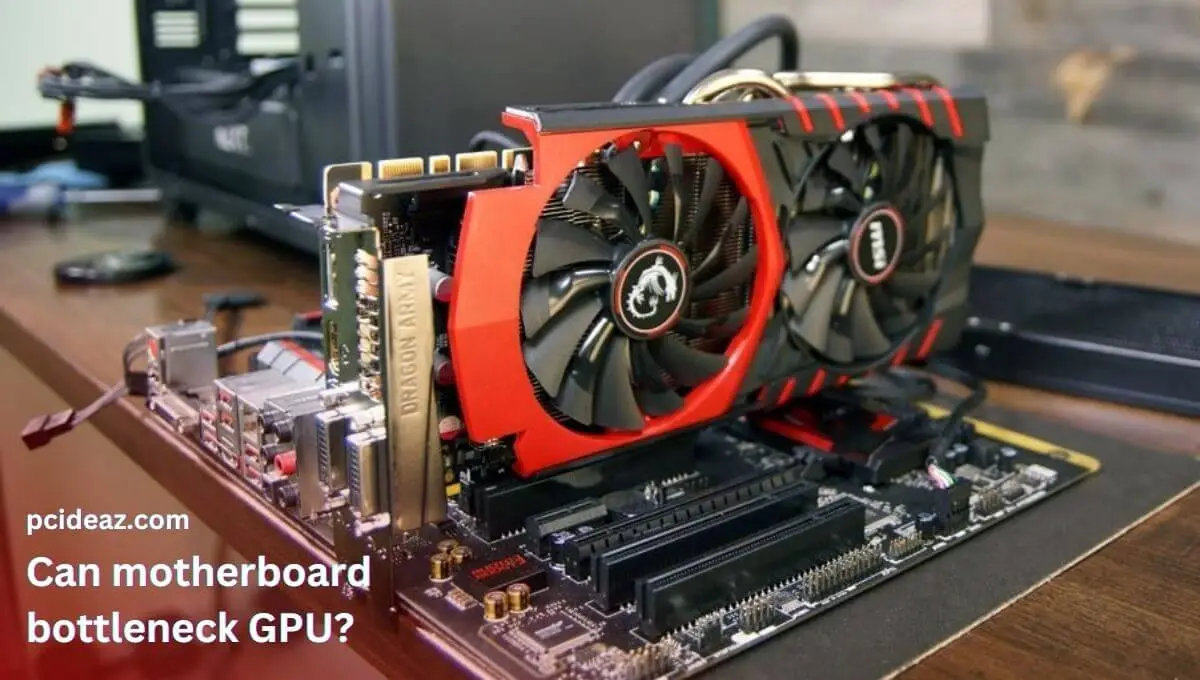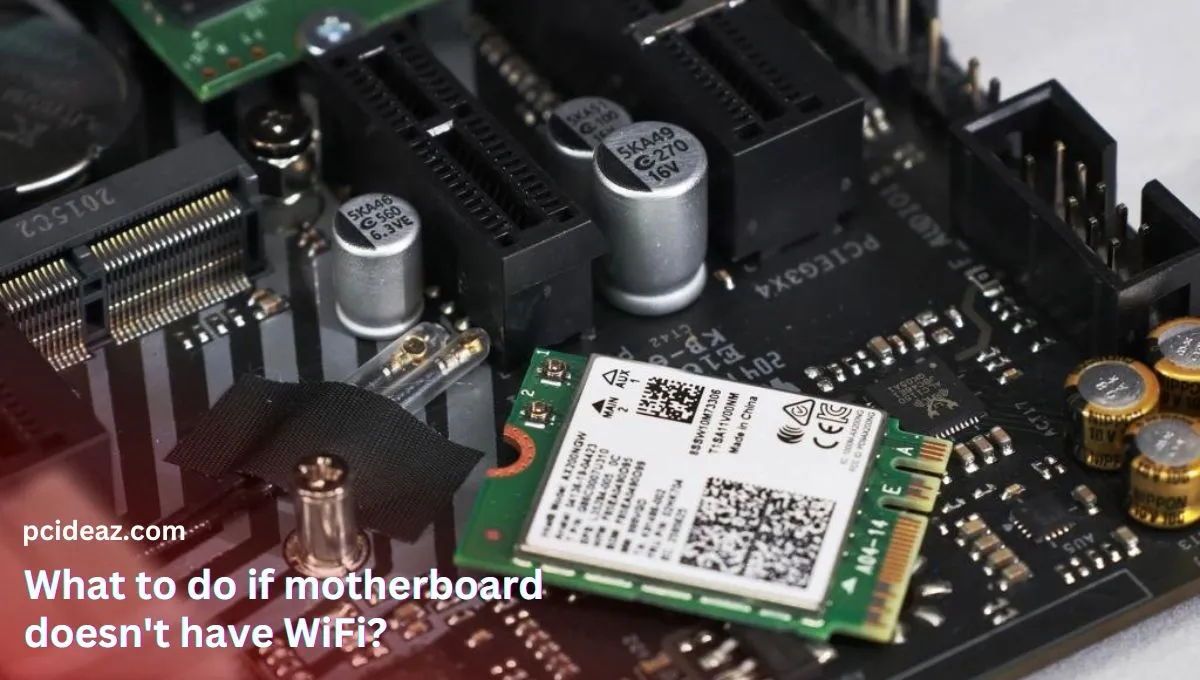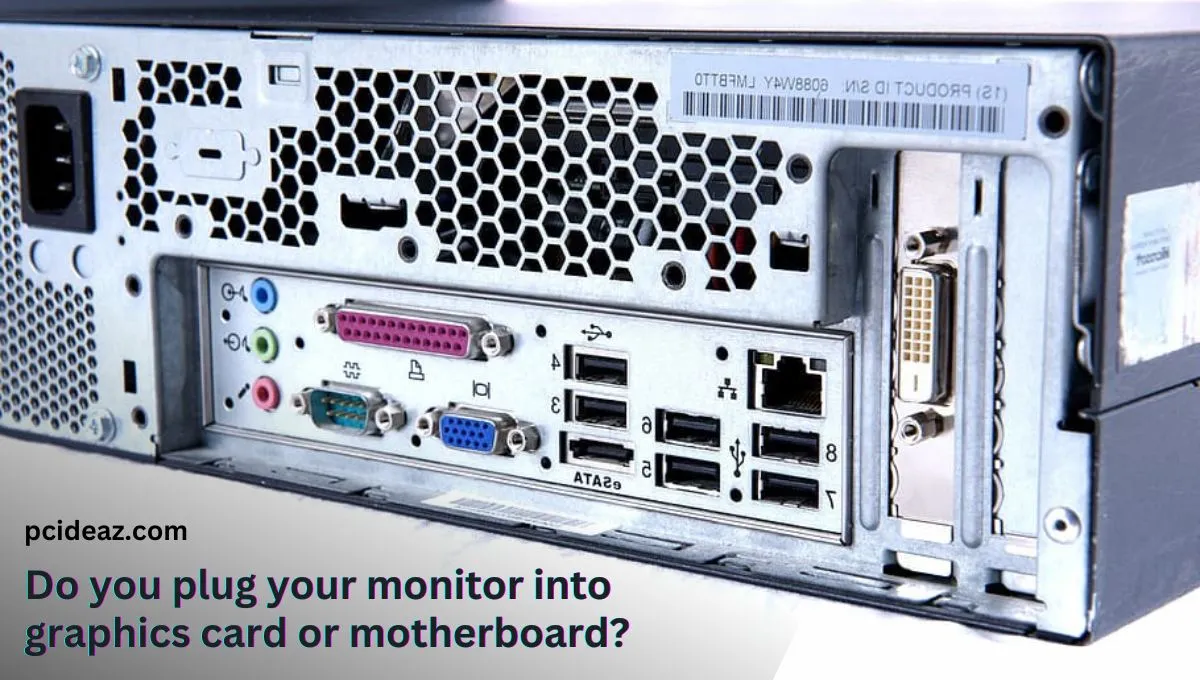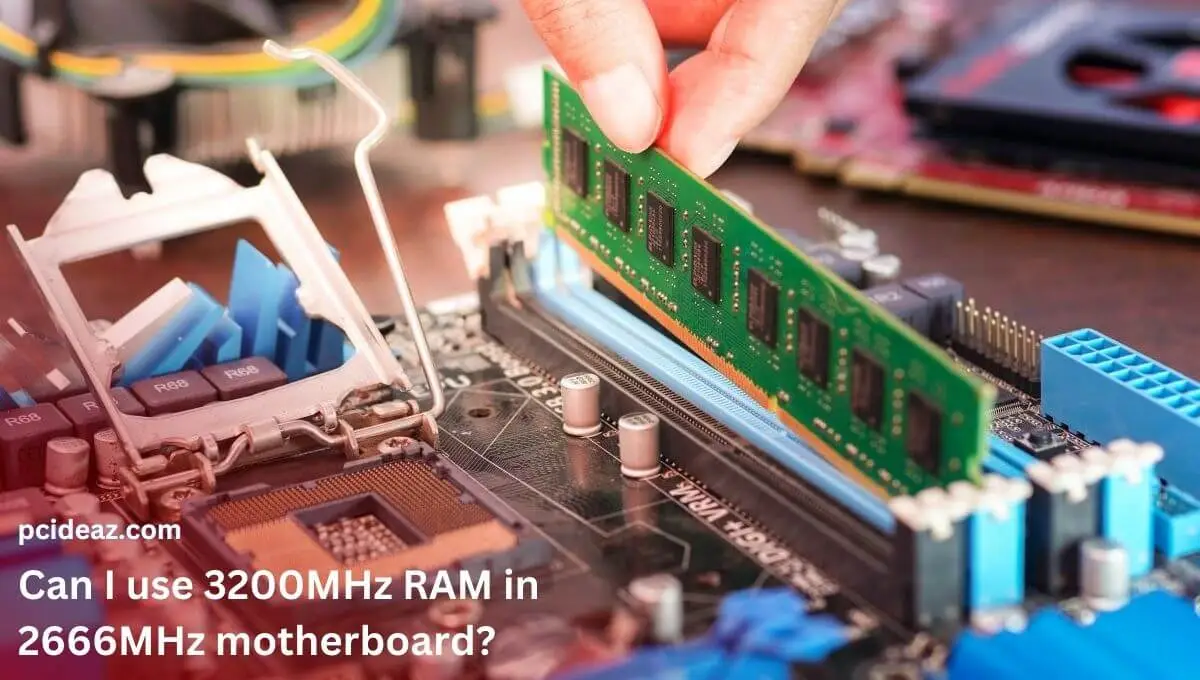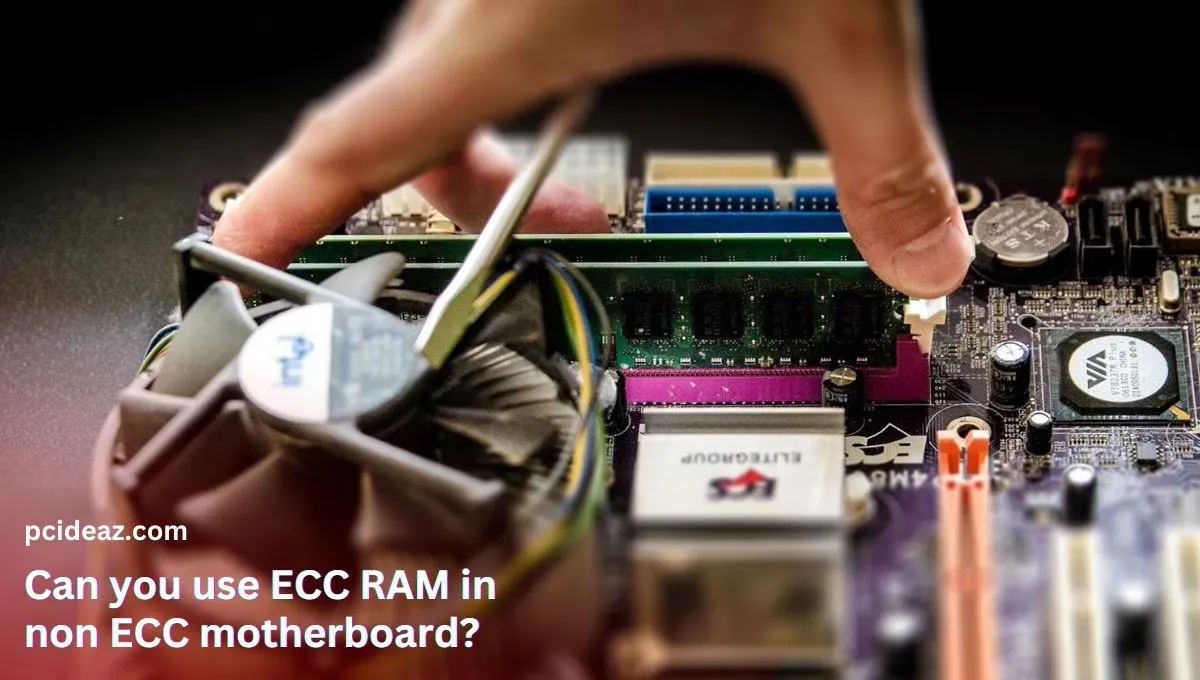Graphics cards, or GPUs, are one of the essential pieces of hardware in a gaming PC. They’re responsible for processing the 3D graphics that make your games look amazing. Since a graphics card in a computer is so important, it’s also essential to know if can motherboard bottleneck GPU. But motherboard bottlenecks are a common concern among PC enthusiasts and gamers looking to build or upgrade their systems or graphics cards.
There’s been a lot of debate on this topic recently; we’re here to help. In this article, we will explore the relationship between the motherboard and GPU and discuss how to identify and mitigate motherboard bottlenecks to ensure optimal performance. Moreover, we’ll talk about possible reasons for bottlenecks, effects, solutions, precautions, and more. If you’re curious whether your mobo is limiting GPU’s true potential, let’s read!
Key Takeaways
- A motherboard can cause a GPU to bottleneck due to several reasons.
- It’s essential to figure out the exact reason for the GPU bottlenecking before moving toward getting its solution.
What does “Bottlenecking” mean?
The term “bottlenecking” gets tossed around a lot regarding graphics cards. In general, a bottleneck occurs when one component in a computer, such as a motherboard, limits the performance of another component, such as the GPU. In the case of graphics cards, bottlenecking is when your graphics card cannot function at its full potential due to another component in your computer. In most cases, this means that your motherboard is limiting the performance of your CPU or graphics card.
Can motherboard bottleneck GPU?
Yes, a motherboard can bottleneck a graphics card. This can happen when the motherboard’s capabilities are insufficient to support the graphics card’s performance. In GPU bottlenecking, your graphics card cannot send data to your motherboard fast enough. This means that the data has to wait in a queue, which can cause your graphics card to slow down and affect your gameplay or other graphics-intensive activities.
Reasons a motherboard causing GPU bottleneck
Many factors cause a GPU bottleneck. Although defining the exact reasons can be challenging in some situations, the following are some of the most commonly used ones:
- Interface limitations: The interface that connects the GPU to the rest of the system is typically a PCI-Express slot on the motherboard. using a newer-generation graphics card in an older-generation PCIe slot, such as PCI-Express 2.0 instead of PCI-Express 4.0, may limit the graphics card’s performance. It can also happen if the graphics card is installed in a slot with fewer than suitable pins.
- Power delivery: Graphics cards, especially high-performance models, require significant power to operate. A motherboard that cannot provide enough power to the GPU can cause bottlenecking, as the GPU may not perform at its full potential.
- Overclocking: Overclocking is the process of making the GPU run at higher speeds than it is designed to. Some motherboards may be unable to handle the extra stress of overclocking, which can cause GPU bottlenecking. This is because the motherboard may not be able to provide enough power or cooling to support the higher speeds, resulting in the GPU’s performance being limited.
- Cooling: The GPU generates a lot of heat while in use, and this heat needs to be dissipated to prevent thermal throttling. A motherboard that does not have adequate cooling for the GPU can cause thermal throttling, which is when the GPU’s performance is limited to prevent damage from overheating. This can cause a bottleneck in the GPU’s performance.
Solutions to motherboard causing GPU bottlenecking
You can try several quick solutions if a motherboard is causing a graphics card to bottleneck. Those are given as follows:
Use a suitable motherboard.
Using a motherboard compatible with your graphics card is essential in avoiding potential bottlenecks and ensuring optimal performance for your system. Using a compatible motherboard means that the GPU can transfer data to the rest of the system at the highest speeds possible and will have enough power and cooling to operate at its full potential. This will help to ensure a lag-free experience of gaming.
A motherboard that is not compatible with your graphics card can limit the performance of the GPU by having a slow or outdated interface for connecting to the GPU, such as PCI-Express 2.0 instead of PCI-Express 4.0, or by not having enough power delivery or cooling capabilities to support the graphics card. In short, if the motherboard isn’t as good as the GPU, you must replace it with a new one.
Use a PCIe x16 extension.
When you have a PCI Express x16 graphics card and connect it to a motherboard using a PCIe x8 slot or other slots with fewer lanes than the x16 slot, it can cause a bottleneck in the performance of the graphics card. This is because the graphics card cannot transfer data to the rest of the system at the highest speeds possible, as the fewer lanes available in the x8 slot or other slots can’t handle the data transfer rate of the x16 graphics card.
In this scenario, you can use a PCIe x16 extension to connect the graphics card to the motherboard. The extension is a device that adds additional lanes to the existing x8 slot or another slot, providing more lanes for the graphics card to use. This can help reduce bottlenecks and improve the graphics card’s performance.
It’s important to note that not all motherboards support a PCIe x16 extension, and not all extensions are compatible with all motherboards. It’s essential to check the extension’s compatibility with your specific motherboard before purchasing. Also, it’s essential to ensure that the extension is connected to the correct slot and that the graphics card is seated correctly in the extension.
Upgrade the RAM.
Increasing the amount of RAM in your computer is one way to prevent GPU bottlenecking. Considering upgrading, you can look at our list of the top ten DDR5 RAMs. You might need to change to a motherboard and/or power supply with more capacity if you already utilize a lot of RAM.
Update your BIOS and drivers
One of the most common causes of GPU bottlenecking is outdated drivers or BIOS. Driver age may lead to lower performance and stability issues. Therefore, keeping your BIOS and driver updates up to date is essential. This will help reduce the risk of a bottleneck and guarantee that your GPU performs at its best level.
Change the graphics card’s settings.
Several actions can be taken to change the settings on your graphics card and prevent bottlenecking. Make sure your computer’s graphics card is set up properly first. Make sure your drivers are up to date by checking them. You may avoid GPU bottlenecking and enjoy your gaming with these simple techniques.
Overclock your graphics card
Overclocking the graphics card can potentially help to overcome GPU bottlenecking caused by a motherboard, but it may not be a guaranteed solution. Overclocking can increase the GPU’s performance, which can help to alleviate the bottleneck caused by a slow or outdated interface, insufficient power delivery, or inadequate cooling on the motherboard.
However, it is essential to note that overclocking the GPU can also increase the stress on the motherboard and other components. Hence, ensuring that the motherboard can handle the increased performance is crucial. Also, it is crucial to make sure that your GPU is good enough to be overclocked and that it won’t damage it.
Conclusion
Motherboard bottlenecks are a common concern among PC enthusiasts and gamers looking to build or upgrade graphics cards or their systems. A bottleneck occurs when one component in a computer, such as a motherboard, limits the performance of another component, such as the GPU. In most cases, the motherboard limits the graphics card’s performance. A motherboard can bottleneck a graphics card when its capabilities are insufficient to support its performance.
This can happen if there is an outdated or slow interface for connecting to the GPU, insufficient power delivery, inadequate cooling, or the motherboard cannot handle overclocking. To avoid this, ensuring that the motherboard is compatible with the graphics card and has the necessary features to support its performance is crucial. Solutions include using a suitable and compatible motherboard, a PCIe x16 extension, or overclocking the graphics card.
Frequently Asked Questions
How can a motherboard bottleneck a GPU?
A graphics card needs an x16 slot on a motherboard with 16 lanes for the best results. Your GPU can get bottlenecked if you install a graphics card in any other slot, such as the x8 slot. 8 or 4 lanes are available in the second or third x16 slots on a standard motherboard. It won’t experience bottlenecking on an x8 slot if you have a low-mid-range graphics card that doesn’t produce much data and doesn’t overload the bandwidth offered by 8 lanes.
On the other side, the same quantity of data can result in performance bottlenecks if you have a high-end GPU that does generate more data. Budget Systems carried out an excellent study on this subject. They used various software and video games to test an NVIDIA Titan X PCIe 3.0 card in x8 and x16 slots.
The findings are pretty solid in that a high-end graphics card does lag when put into an x8 slot as well as a 16 slot. The only method to achieve maximum performance if you have a modern device but an older motherboard with older-generation PCIe slots is to change your motherboard. When utilizing the cards in earlier PCIe slots, there is a noticeable reduction in DaVinci Resolve’s (video editing software) performance.
